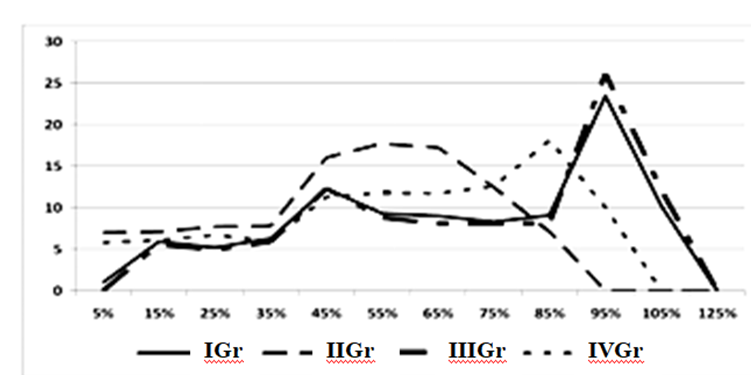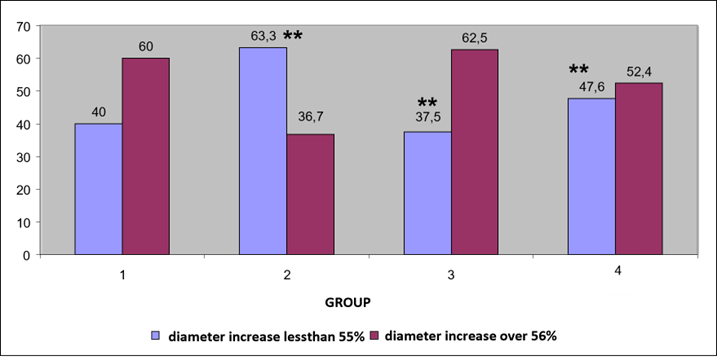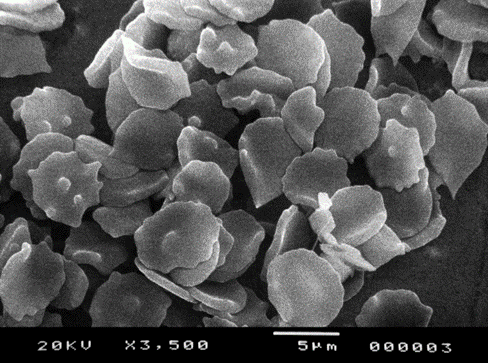Research Article | DOI: https://doi.org/10.58489/2836-2179/018
Deformability Of Erythrocytes And Microcirculation In Old Patients With Hypoxia Of Various Genesis
1Doctor of Health Sciences, Polish Society of Social Medicine and Public Health, Zielona Gora, ul. Drzonkow-Romera,12, Polska 66-004.
2Department Physical Culture and Sport Vasil Stefanyk Precarpatian University, Shevchenko Str.,57, 76025, Ivano-Frankivsk, Ukraine.
*Corresponding Author: S. L. Popel*
Citation: P. Bejga & S. L. Popel. (2022). Deformability Of Erythrocytes And Microcirculation In Old Patients With Hypoxia Of Various Genesis Emergency and Nursing Management. 2(2). DOI:10.58489/2836-2179/018
Copyright: © 2022 S.L. Popel, this is an open-access article distributed under the Creative Commons Attribution License, which permits unrestricted use, distribution, and reproduction in any medium, provided the original work is properly cited.
Received: 22 April 2023 | Accepted: 30 June 2023 | Published: 22 July 2023
Keywords: erythrocyte membrane’s deformability, microcirculation, hypoxia
Abstract
Age-related changes in the deformability of erythrocyte membranes against the background of heart and respiratory failure exacerbate disorders of the blood supply to tissues and organs at the microcirculatory level, which is an important factor in worsening the prognosis of the disease, especially in people over 60 years of age. The purpose of the work is to investigate the patterns of changes in the deformability of erythrocyte membranes against the background of heart and respiratory failure in older people. In older patients against the background of COPD and CHF, a decrease in the deformability of erythrocyte membranes and associated microcirculation disorders against the background of hypoxia are detected. Age-related physiological changes in the morpho-functional state of erythrocyte membranes and changes in the deformability of their membranes against the background of somatic pathology (heart, respiratory failure, fever) lead to a syndrome of mutual weighting, exacerbate disorders of the blood supply to tissues and organs at the microcirculatory level, which is an important factor in worsening the prognosis diseases, especially in people over 65 years of age.
Introduction
It is known that in the process of aging patients, the deformability of the erythrocyte membrane’s decreases, which leads to a change in the efficiency of the functioning of the microvasculature [1]. At the same time, with age, there is an increase in somatic pathology, which places increased demands on the microcirculation system. These diseases include primarily chronic diseases of the broncho-pulmonary and cardiovascular systems that occur with respiratory and heart failure, the main manifestation of which is hypoxia, which is a typical pathological process associated with impaired oxygen delivery to tissues [2-5]. as shown by us in co-authorship with other authors [8,9], the deformability of erythrocytes is a fundamental property that ensures sufficiently strong contact between the erythrocyte and the wall of hemocapillaries, which ensures effective metabolism and delivery of oxygen to tissues. However, studies of the deformability of erythrocytes are carried out sporadically, while the interpretation of the results remains unclear.
The purpose of the study is to determine the role of changes of erythrocyte membrane's deformability in the development of microcirculatory disorders in patients of various age groups with hypoxia of various origins..
Materials and Methodology
To study the effect of hypoxia on the erythrocyte membrane, we studied their deformability in patients with chronic obstructive pulmonary disease (COPD) and chronic heart failure (CHF), which were divided into 2 groups according to age criteria: Group I - patients aged 60-69 years (n=30) and Group II - patients aged 75-85 years (n=30). At the same time, patients with the same severity pathology were included in the first and second groups. The control group included practically healthy people who were also divided by age into 2 groups: Group III - patients aged 60-69 years (n=30) and Group IV - patients aged 70-79 years (n=30). Whole blood was obtained by puncture of the cubital vein. EDTA was used as an anticoagulant. Erythrocytes were separated from plasma by centrifugation (10 min at 1500 rpm). A working suspension of erythrocytes was obtained by washing three times with a solution of low ionic strength Liss (manufactured by Hematologist LLC) with a centrifugation mode at 2700 rpm for 8 minutes. Determination of the deformability of the erythrocyte membrane's deformability was done by mechanically pumping a drop of blood (0.05 ml) through a glass capillary with a diameter of 2 μm and "laser tweezers". The principle of the method is based on measuring the relative elongation of erythrocytes under the influence of pneumatic pressure = 15 mm Hg, with forward-return movement, which corresponds to the conditions of hemodynamics at the level of the microcirculatory bed of most organs and tissues of the human body [6]. The speed of movement of the spot of the optical trap was about 15–20 µm/sec. The beam from the laser passed through the collimator and was directed to the 100x objective of the MIN-8 microscope. The results of the experiments were recorded on a camera connected to a computer. The size of an erythrocyte was determined by its shadow contour. The initial size of erythrocytes ranged from 6.2 µm to 8.1 µm. Deformability was determined using the cell contour analysis program. To determine the degree of influence of erythrocyte membrane's deformability on microcirculation and oxygen supply of tissues, we conducted a study of blood microcirculation in the same groups of people using the method of laser Doppler flowmetry [7] with spectral analysis of blood flow fluctuations on the multifunctional laser diagnostic complex "LAKK-M" ("PLAZMA ", Russia). The following parameters were determined: the average value of perfusion (A, perf. units), the saturation of mixed (capillary) blood (SO2,%), the relative volume of the erythrocyte fraction (Vr, mm3), the index of perfusion oxygen saturation in the microcirculation (SOm=SO2/M , arb. units), index of specific oxygen consumption in the tissue (U= SpO2/SO2, c.u.), arterial blood saturation (SpO2) in the skin of the fingertips of the right hand. Statistical data processing was performed using the Statistica for Windows 6.0 software package. The significance of differences in mean values was assessed at the significance level of p<0>
Results
The definition of the deformability of erythrocyte membranes was done out using laser tweezers in these groups of patients compared with control group of the same age, which included practically healthy people (Fig. 1).
The data obtained allow us to say that the age of patients plays an important role in the degree of adaptation of the patient's body to hypoxia conditions. With a statistically identical degree of hypoxia in patients of group I, an increase in the number of "hard" cells by no more than 6.7% was noted in the structure of erythrocytes (p<0>
So, if in healthy patients from the control group, most of the erythrocytes could be deformed by 85% of the initial diameter, then against the background of hypoxia, the largest number of erythrocytes gave an increase in diameter of no more than 55-65% of the original (p<0>
To clarify the relationship between the violation of the morpho-functional state of erythrocytes, microcirculation and the degree of oxygen supply of tissues in conditions of pathology, we conducted a study of blood microcirculation on the multifunctional laser diagnostic complex "LAKK-M". The obtained indicators of microcirculation in patients of the described groups are presented in table. 1.
Table 1: Parameters of peripheral microcirculation in patients of different age groups
| Index | Group I,n=30 | Group II, n=30 | Group III, n=30 | Group IV, n=30 |
| A, perf. units. | 12,1±0,3 | 10,0±0,4** | 13,2±0,3* | 11,2±0,4* |
| SO2,% | 80,8±0,4 | 83,8±0,2 | 80,1±1,3 | 80,5±1,1 |
| SpO2 | 92,1±0,3 | 92,0±0,3 | 98,2±0,4 | 97,1±0,3 |
| Vr, мм3 | 13,5±0,1 | 10,2±0,2** | 14,1±0,3* | 12,1±0,3* |
| SОm= SO2/М, с.u. | 6,7 | 8,3 | 6,2 | 7,1 |
| U= SpO2/ SO2, c.u. | 1,14 | 1,09 | 1,22 | 1,20** |
| Heart rate bpm | 83,7±1,4 | 95,4±1,1* | 77,2±2,3 | 84,2±2,3 |
Note: * - p<0>
With the same degree of hypoxia, in patients of group II, the heart rate is higher than in patients of group I by 13.9% (p<0>
This assumption is confirmed by the fact that in patients of group II, the average value of tissue perfusion is less than in patients of Group I by 21.0% (p<0>
An indirect confirmation of this is that in patients of Group II, to a greater extent than in patients of Group I, the saturation of mixed blood increases (by 3.7%). Perhaps this is partly due to the fact that more rigid red blood cells are less able to give oxygen to tissues.
Deterioration of oxygen supply to tissues against the background of hypoxia with age is also confirmed by a decrease in their index of specific oxygen consumption in tissues (U = SpO2 / SO2, c.u.) compared to younger patients by 4.6% (p<0>
Discussion
The results of our study are consistent with the findings of other authors [1,3], who also found that oxygen supply to tissues deteriorates with age in the presence of hypoxia. This is also confirmed by a decrease in their index of specific oxygen consumption in tissues compared with younger patients. In other studies, changes in erythrocytes were also revealed as reactions to hypoxia and concomitant microcirculation disorders [4,5] This allows us to assume that these mechanisms are of significant importance. in determining the prognosis of cardiopulmonary pathology in patients of various age groups. and may be one of the reasons for the lower survival of patients with cardiopulmonary pathology in older age groups.
Conclusion
1. In older patients against the background of COPD and CHF, a decrease in the deformability of erythrocyte membranes and associated microcirculation disorders against the background of hypoxia are detected.
2. Age-related physiological changes in the morpho-functional state of erythrocyte membranes and changes in the deformability of their membranes against the background of somatic pathology (heart, respiratory failure, fever) lead to a syndrome of mutual weighting, exacerbate disorders of the blood supply to tissues and organs at the microcirculatory level, which is an important factor in worsening the prognosis diseases, especially in people over 65 years of age.
References
- Vorobyeva, N. V. (2017). Physiological reaction of erythrocytes’ microrheological properties on hypodynamia in persons of the second mature age. Annual Research & Review in Biology, 1-9.
View at Publisher | View at Google Scholar - Assessing Effectiveness of Community Acquired Pneumonia Treatment by Continuous Pneumonia Severity Score. Case Medical Research.2019;10 (25).
View at Publisher | View at Google Scholar - Putri, A.; Oktoviono, Y. and Pikir, B. (2018). The Effect of Garlic Extract on Endothelial Progenitor Cells (EPCs) Quantification in Chronic Stable Angina Pectoris Patients. In Proceedings of the International Meeting on Regenerative Medicine - IMRM; ISBN 978-989-758-334-6; ISSN 2184-3635, SciTePress, pages 49-52.
View at Publisher | View at Google Scholar - Berezin AE (2017) Biosensing of periprocedural events in acute ST-segment elevation myocardial infarction patients with the erythrocyte-derived microparticles. Cardiovasc Disord Med 2(2); 1-3.
View at Publisher | View at Google Scholar - Adams, C. D., & Neuhausen, S. L. (2019). Evaluating causal associations between chronotype and fatty acids and between fatty acids and type 2 diabetes: a Mendelian randomization study. Nutrition, Metabolism and Cardiovascular Diseases, 29(11), 1176-1184.
View at Publisher | View at Google Scholar - Tani A., Ikegami S., Tabuchi H., Bando K., Otomo R. Experiment and analysis method for evaluation of mechanical properties of membranes utilizing swelling deformation of erythrocytes.2018 in The Proceedings of Mechanical Engineering Congress, Japan. 2019;3(20):420-25.
View at Publisher | View at Google Scholar - Ladozhskaya-Gapeenko, E. E., & Khrapov, K. N. (2020). Possibilities of laser-Doppler flowmetry in assessment of functional state of microcirculation. Regional blood circulation and microcirculation, 19(3), 39-45.
View at Publisher | View at Google Scholar - Popel Serge L, Bejga Przemysław Stefan, Melnik Ivan V, Churpiy Ihor K, Greсkiy Oleg V, Barilа Nadiya І, Lesia Fedorivska, (2022). Condition Of Membranes Of Erythrocytes Of Peripheral Blood Of Elderly People With Chronic Tiredness And Low Level Of Tolerance To Physical Load. Journal of Emergency and Nursing Management. 1(2).
View at Publisher | View at Google Scholar - Popel, S., Gryb, V., Maksymchuk, L., Doroshenko, O., Henyk, S., Kupnovytska-Sabadosh, M., & Liskevych, I. (2022). STRUCTURAL AND FUNCTIONAL FEATURES OF PERIPHERAL BLOOD ERYTHROCYTES AND ANTIOXIDANT PROTECTION ENZYMES IN PATIENTS WITH MULTIPLE SCLEROSIS. Wiadomosci lekarskie (Warsaw, Poland : 1960), 75(5 pt 2), 1352–1361.
View at Publisher | View at Google Scholar - Mytskan, B. M., Lysenko, Y. O., Mytskan, T. S., & Popel, S. L. (2022). Morpho-functional changes of peripheral blood erythrocytes and enzymes of the antioxidant system in multiple sclerosis. Publishing House “Baltija Publishing”.
View at Publisher | View at Google Scholar
View at Publisher | View at Google Scholar



